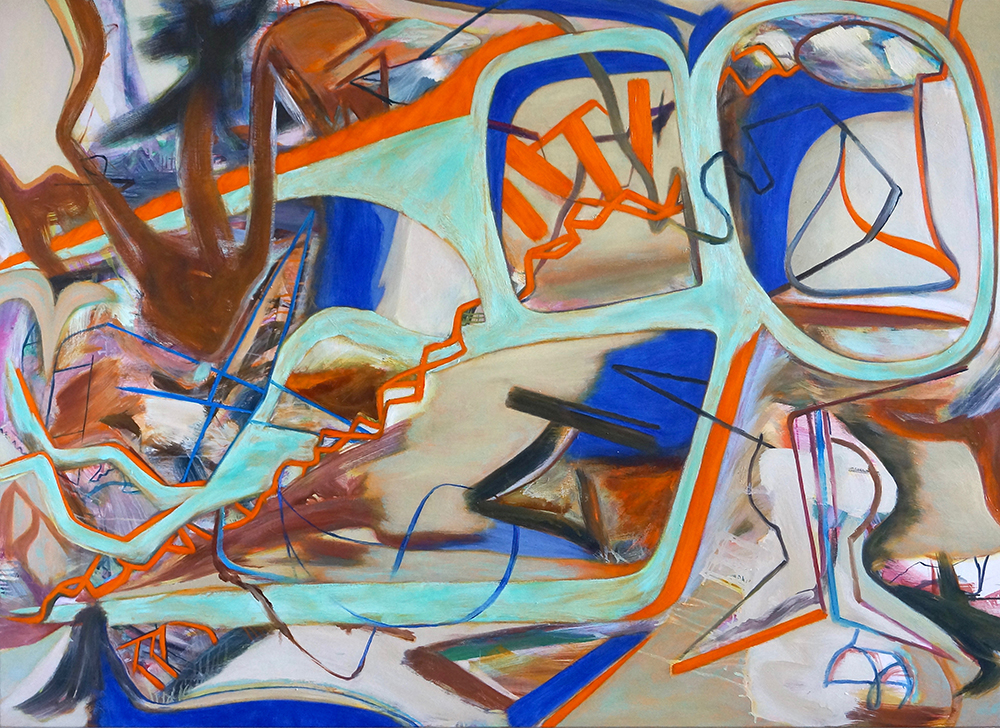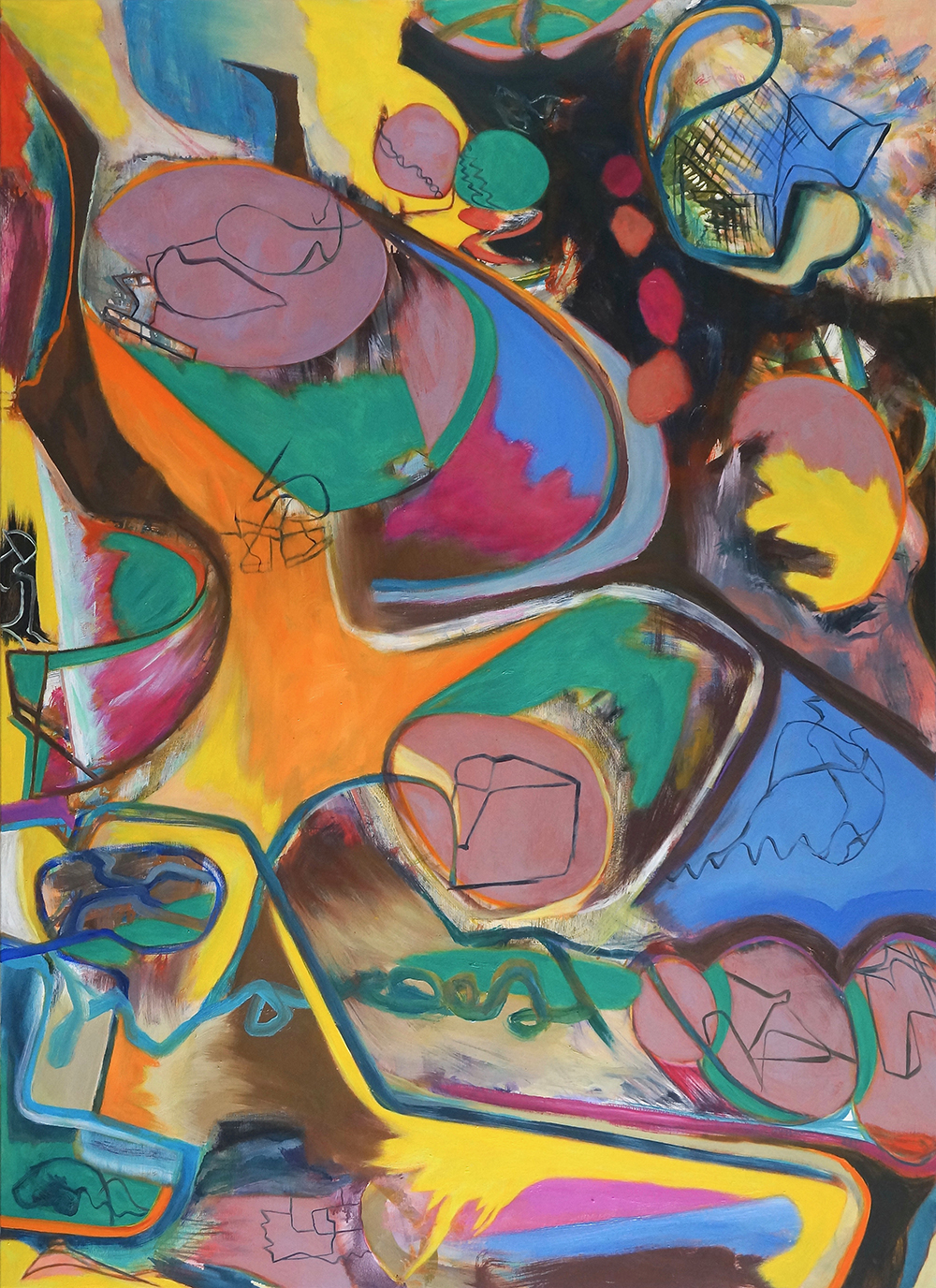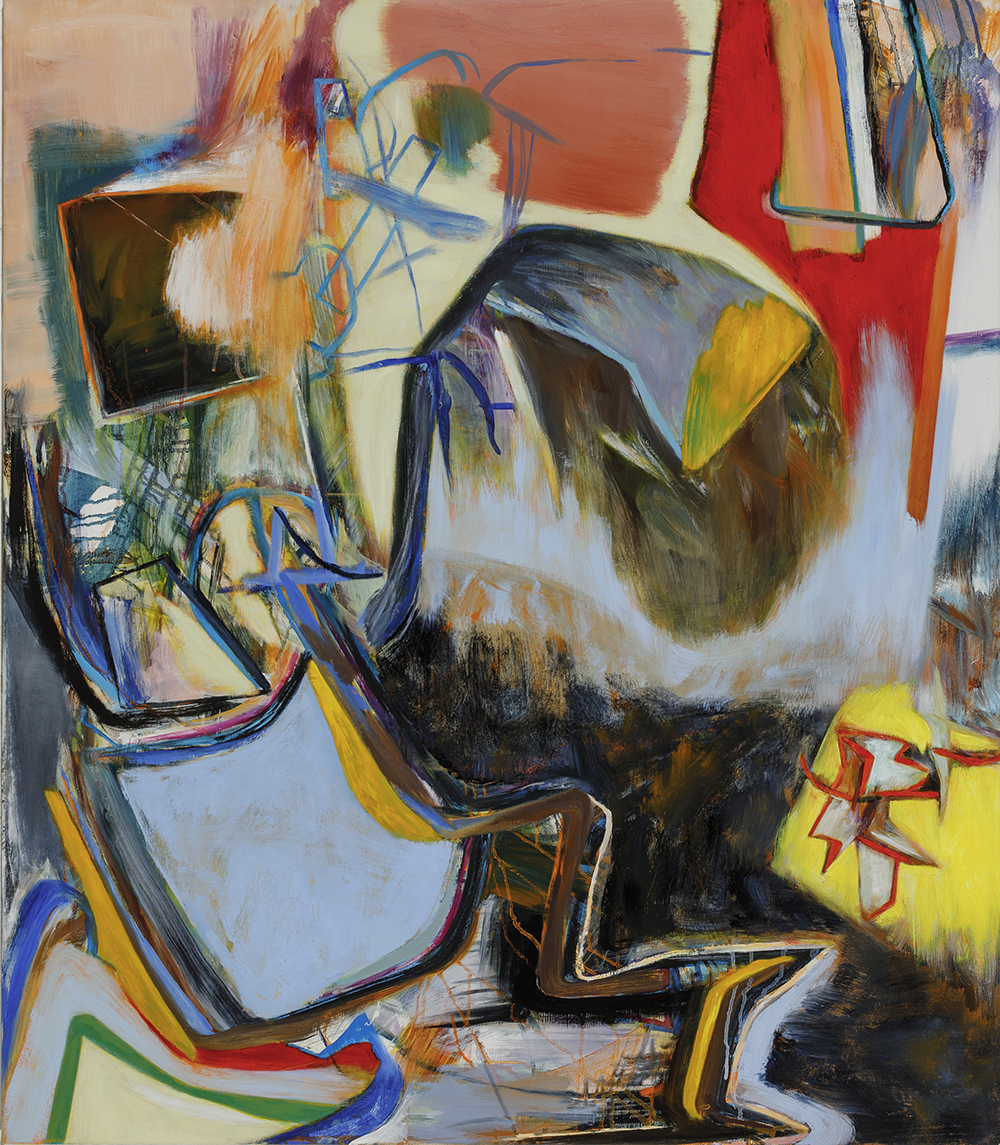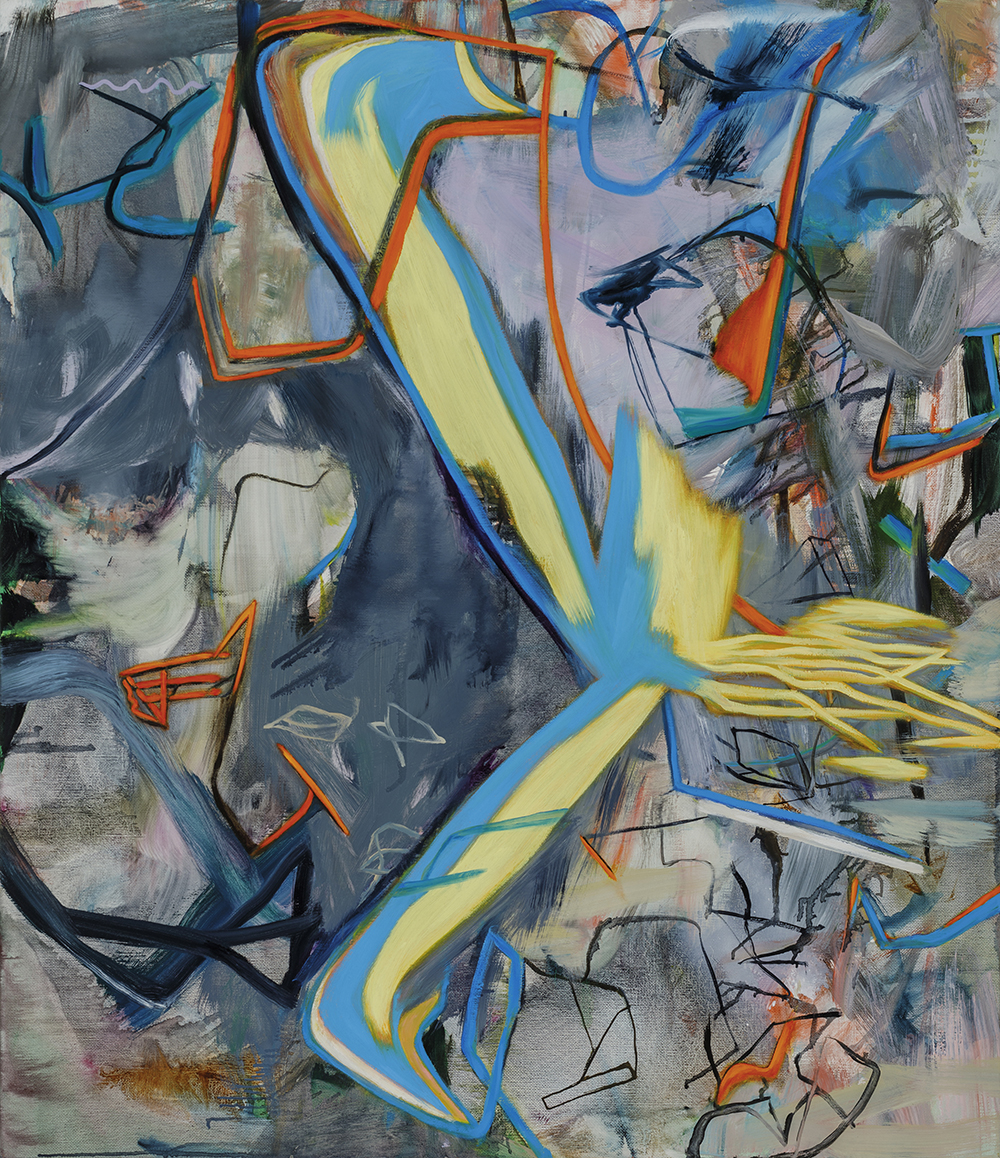15 July 2021, Opening 6-8pm Thursday July 15 2021
July 14 - August 7 2021
1 Sutton Place Carlton,
Melbourne
Introduction -
David Palliser - Subjects in Orbit
1 Sutton Place Carlton Melbourne
Catalogue Essay by Saskia Beudel
When we meet in David Palliser’s studio above a shop on Brunswick Street, he refers to his working methods as a ‘mad chess game’, a series of calibrations and recalibrations between figuration and abstraction, ‘line versus mass’ and ‘drawing versus painting’. Add to this colour, flatness, the illusion of depth, and a range of textures and viscosity in the paint. A day’s work, he says, might be scrubbed out to retain a few small remnants.
‘It’s a torturous process of getting the mechanics of the picture right so that no one thing dominates,’ he says. ‘The drawn sections come very early. The most agonising thing is getting the colour to work, trying to make all the parts animated so that they “sing” or have a “bite” or an emotional punch that you can’t quite put your finger on.’
Painting is, for Palliser, unequivocally process driven, propelled by discovery of ‘anomalies’ and solutions through the creative act rather than by preconceived outcomes. The same holds for his hopes for the viewer. ‘The paintings are about the experience of looking rather than looking at something,’ he says.
‘Are they purely formal exercises?’ I ask. There’s no hint, say, of socially engaged art (Mierle Laderman Ukeles’ landmark Manifesto for Maintenance Art of 1969 springs to mind). Neither do they, as Peter Westwood puts it, ‘merely address some chic criteria’. Palliser is unapologetic in his self-confessedly obsessive focus on the ‘canvas world’ and its technical, tactile, retinal and aesthetic demands. Ironically, he invites an anarchic element into his work, to ‘screw things up’ to see what happens, and yet all this occurs via the most traditional of materials in art historical terms: oil paint on linen.
‘The paintings contain things that are on the verge of becoming something,’ he replies. ‘There is a figurative force trying to animate these things.’ This seems a powerful, apt description. He elaborates further: ‘Spatial play becomes a figurative force that animates chance inventions and shapes discovered on the canvas.’
‘How does your abstraction differ from mid-twentieth-century abstraction,’ I ask, ‘From the work of Willem De Kooning for example, with his concern for mark, gesture and the materiality of paint?’
‘Some of the language is there,’ Palliser says, ‘but I create my own concoction, it’s scrambled in my own way. I bring a different kind of spatial complexity and ambiguity to abstraction. The rhythm is different and I work on a much more intimate scale.’ He doesn’t aim for the ‘heroic’ scale adopted by many abstract expressionists.
He finds lineage in early twentieth-century European painting (Gorky, Miro, Picabia) and for many years has been interested in post-war German art, which had to grapple with the difficult question of art-making in the wake of catastrophe. ‘From the post-war period onwards, German artists seem to have been painting a dilemma. I find that so invigorating. Their visual language is more used to mixing things up, abstraction and figuration can coexist. There’s also a great understanding of the ways in which paint and mark can play out on the canvas and act as a generator of content.’
During a second conversation, Palliser refers to his work as ‘very thin sculptures’ almost like bas reliefs. He means this literally – layers ranging from spare, airy washes and dripping fluid to dense, opaque pigment – and in terms of the spatial illusions the paintings perform. As I write I bring up several of his new works on my screen and they sit for days, in among other files, with their quirky, opaque titles Arrow in Japan (2021), Truce (2021), Falling Complexions (2021), The Them (2021). Spaces between blocked-in colour afford glimpses ‘inward’ as if through apertures to underpainting, in places overlaid with playful, puzzling linework. A shape begins then becomes other, hinting at some unnameable object; a twist of lime-green sits against flat orange; something resembling delicate brickwork begins then terminates.
‘In a way, these are disassembled paintings,’ says Palliser, ‘reassembled through the viewing.’ As I continue looking, over days, just what might be reassembled remains an open question. And this may be precisely the point: to hold open the question of what is this we’re looking at? And what kind of experience of looking and encountering does the work generate?
His work defies genre and interpretation. On one hand, they are ‘just pictures’ he says in a half-joking, self-effacing moment. On the other, everything is staked in the act of painting, and the improvisations that occur. He speaks of the elevation of ‘slight moments and slight shapes’ generated by that improvisation into ‘something more sculptural.’
‘It’s a great time to be painting now,’ he says as we finish talking, ‘In terms of evolution of painting, it seems there’s nothing but to find your own voice and to work forward with that.’
Saskia Beudel
July 2021
REFERENCES
Peter Westwood, ‘The brain hand thing’, Imagine: The Creativity Shaping Our Culture, Heide Museum of Art, 2006




